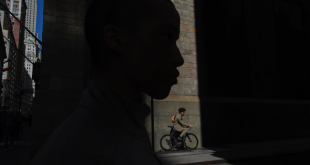Advanced stop lines (ASLs) were first introduced to the UK during the mid 1980s to assist right-turning cyclists at signalised junctions. The first trial sites were simple single carriageway junctions. Later studies looked at sites with more than one queuing lane and a central feeder lane. The studies did not quantify the benefits of ASLs by recording accident data before and after.
ASLs are now introduced at many locations where it is not possible to turn right, such as signalised roundabouts and gyratory systems. The dimensions and layouts are variable. In many cases, there is no feeder lane.
"I am interested in cyclists’ experience of using different designs, and whether or not there is a preferred arrangement," said Lord.
"I want to find out how cyclists feel about advanced stop lines, whether they are happy with the design and implementation, and whether they feel that they are a benefit to the safety and convenience of cyclists."
As well as his online survey he may also wish to contact some of the respondents by telephone. Those wishing to be contacted should give their telephone number.
THE SURVEY:
1. Do you use an ASL as part of a regular journey by bike? Y/N
2. Does it have:
(a) A nearside feeder lane (by left kerb)? Y/N
(b) A central feeder lane (between traffic lanes)? Y/N
(c) No feeder lane Y/N
3. Does it have coloured tarmac and cycle logos? Y/N
4. Have you experienced any of the following at ASLs on your route:
(d) Cut-up by left-turning vehicle? Y/N
(e) Hit from behind when waiting to turn right? Y/N
(f) Hit from car coming towards you when turning right? Y/N
(g) Signals change before you get chance to clear junction when turning? Y/N
(h) ASL ‘reservoir’ blocked by cars? Y/N
Please give brief description of type of junction (T junction, cross roads etc), time of day and incident.
5. If you were injured as a result, did you report it to the Police? Y/N
6. Do you think ASLs are a benefit to cyclists safety? Y/N
7. What do you think are the most important design elements? (rank from 1-7)
(i) Feeder lane?
(j) Width of feeder lane (state minimum acceptable)?
(k) Length of reservoir?
(l) Coloured surfacing?
(m) Signing?
(n) Length of ‘red’ time at lights (to get to front of queue)?
(o) Length of time before lights change for next phase (to enable right-turners to clear junction)?
(p) Other (please state)
8. Please type any further comments below:
The study will be completed by April.
CONTACT:
Tel:0121 213 3650
 BikeBiz Bicycle and cycling retail news
BikeBiz Bicycle and cycling retail news



